If a blind man leads a blind man, both will fall into a pit. Unless the blind man happens to be a coach, speaker and entrepreneur. During Joost Rigter’s closing keynote at this year’s MagentoLive Europe conference, everyone in the audience was blindfolded and taken on a journey to embrace change by being accepting and vulnerable. Not your typical MagentoLive keynote, but a great reminder that we need to be stepping out of our comfort zone every now and then, both on a personal and business level.
Adobe invited the biggest innovators in ecommerce to Europe’s biggest Magento event to come and network with leading merchants, partners, and developers to join industry leaders like Royal Dutch Gazelle, a bicycle manufacturer from the Netherlands, in live keynote sessions, merchant panels, and workshops. From Monday through Wednesday the Amsterdam RAI Exhibition and Convention Centre was painted in Magento orange.
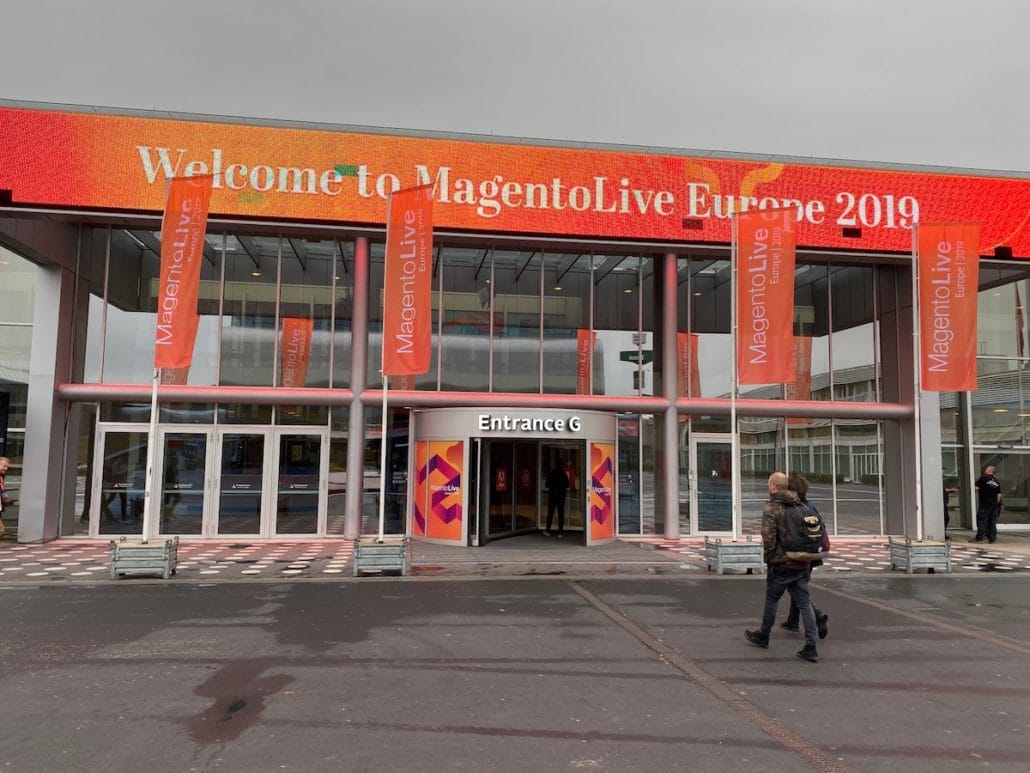
Last year’s MagentoLive was dedicated to experience-driven commerce. Now that Magento is becoming a more integral part of Adobe it was transformed into changing the world through digital experiences. Adobe wants to bring next generation, experience-driven commerce to the mid-market (KMU) and enterprise (grosse Unternehmen). The Adobe Stock integration into Magento is one of the examples of how Magento and Adobe can complement each other. It’s interesting to note that this integration was built by the Magento Community Engineering team.
Adobe Stock
The Adobe Stock integration provides a searchable interface in the Magento admin to explore, preview and use stock images inside PageBuilder or WYSIWYG (what you see is what you get) content. Magento admin users are able to access Adobe Stock from the Media Gallery, search for images, save watermarked image previews and try it inside the content. The right fit image can be licensed through Adobe. Watermarked preview images will be replaced with licensed files in media storage and across all CMS content currently using the watermarked preview.
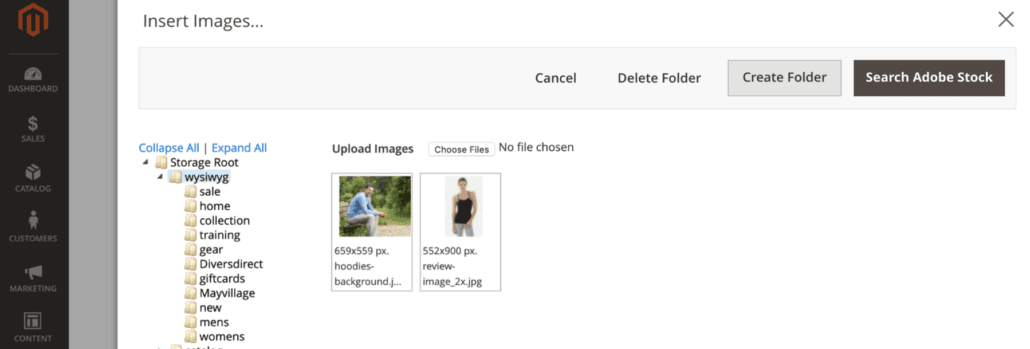
Adobe Experience Cloud
This is only one example of how Adobe wants to integrate their different Experience Cloud products with Magento Commerce:
- Analytics
- Audience profiles
- Content management
- Campaign management
- Advertising
- Personalization
None of those products are open source software as far as I know. Magento is only one of over 320 open source repositories that Adobe contributes to, though.

It’s also interesting to note that Magento is not the most popular open source project at Adobe.
Contribution Day
The MagentoLive conference took place on Tuesday and Wednesday. On Monday, another Contribution Day took place, where you get the chance to work side-by-side with other community developers and Magento teams. It’s an opportunity to learn how to submit your first contribution to Magento core, get involved in building new features like the before mentioned Adobe Stock Integration, or contribute to the merchant and developer documentation. You don’t have to be a developer to be able to contribute, though.
In the late afternoon, Magento community members presented their contributions to the other contributors and Magento team members.
Early Adopters of Progressive Web Apps
The first presentation I attended on Tuesday morning by Magento frontend architect James Zetlen and product manager Eric Erway caught a lot of interest from MagentoLive attendees.
Progressive Web Apps (PWA) is a technology that makes stores 300-400% faster compared to Magento 2 on average, so it’s no wonder that many Magento developers and agencies are trying to adopt these new capabilities early on. The benefits of progressive for merchants are superior shopping experiences (increased conversion and revenue, improved engagement, higher performance), as well as faster time to market (customization gets easier).
I already wrote about Magento PWA Studio in this blog, a set of developer tools that allow for the development, deployment, and maintenance of a PWA storefront on top of Magento 2. It uses modern tools and libraries to create a build system and framework that adheres to the Magento principle of extensibility. PWA Studio 4.0.0 was released 2 weeks ago.
Although Openstream usually also adopts new technologies early on, the lower cost of ownership suggested during this MagentoLive presentation might only be applicable for bigger merchants at the moment, because smaller merchants usually rely on Magento’s non-PWA checkout in order to support their preferred payment service providers. Magento PWA supports some payment methods out of the box, but not all that Swiss merchants usually like to integrate into their online stores.
PWA Studio will support Magento 2’s B2B features sometime in 2020, which will make early adoption difficult if you don’t want to spend too much time building out those features yourself. If you don’t need B2B features and can live with a limited number of payment methods, there’s no reason to get started now, though. Magento PWA is the most popular Magento open source project on Github. There have been 45 (!) releases since the project started.
Magento U training for PWA Studio will start in Q2/2020, but there are various getting started videos and other resources available on developer.adobe.com/commerce/pwa-studio/. For developers it is recommended to learn React and GraphQL. On MAGE2.tv Magento U trainer and developer Vinai Kopp offers various GraphQL video tutorials:
- Introduction into the Magento 2 GraphQL API (6 videos, 32 minutes)
- Using the GraphQL API to build an infinite scroll product list with the classic frontend (19 videos, 2 hours 34 minutes)
- Server side GraphQL customization with Magento 2 (17 videos, 1 hour 44 minutes)
- More on the Magento GraphQL API (2 videos, 5 minutes)
GraphQL can be used both with PWA Studio as well as the classic frontend stack.
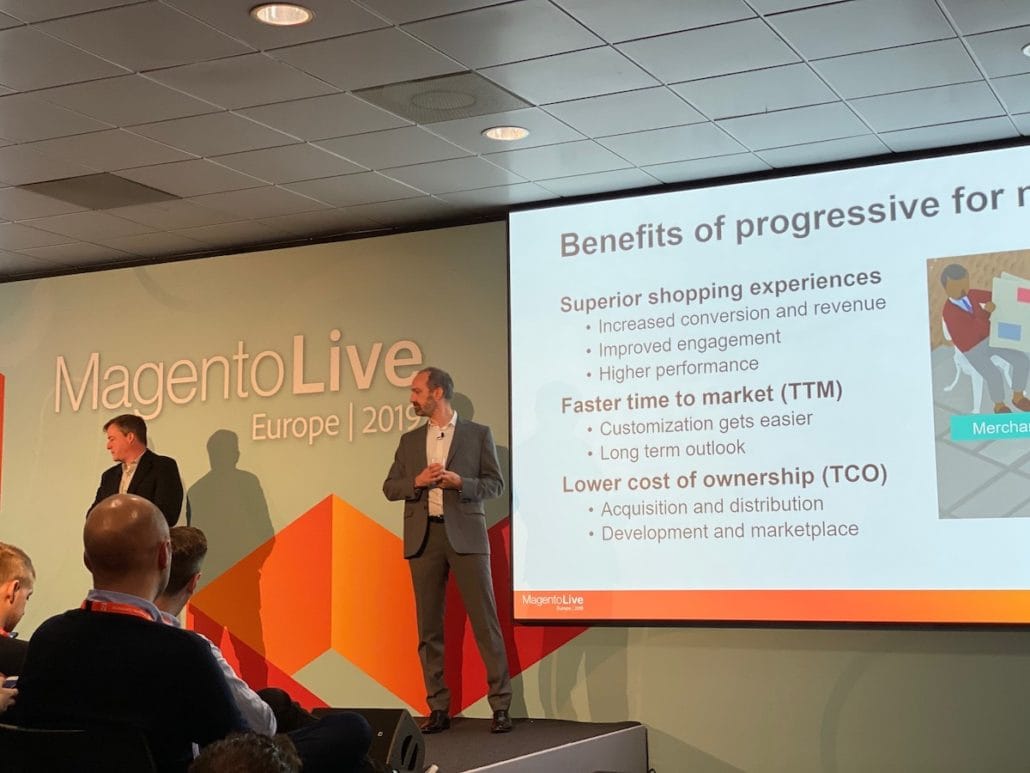
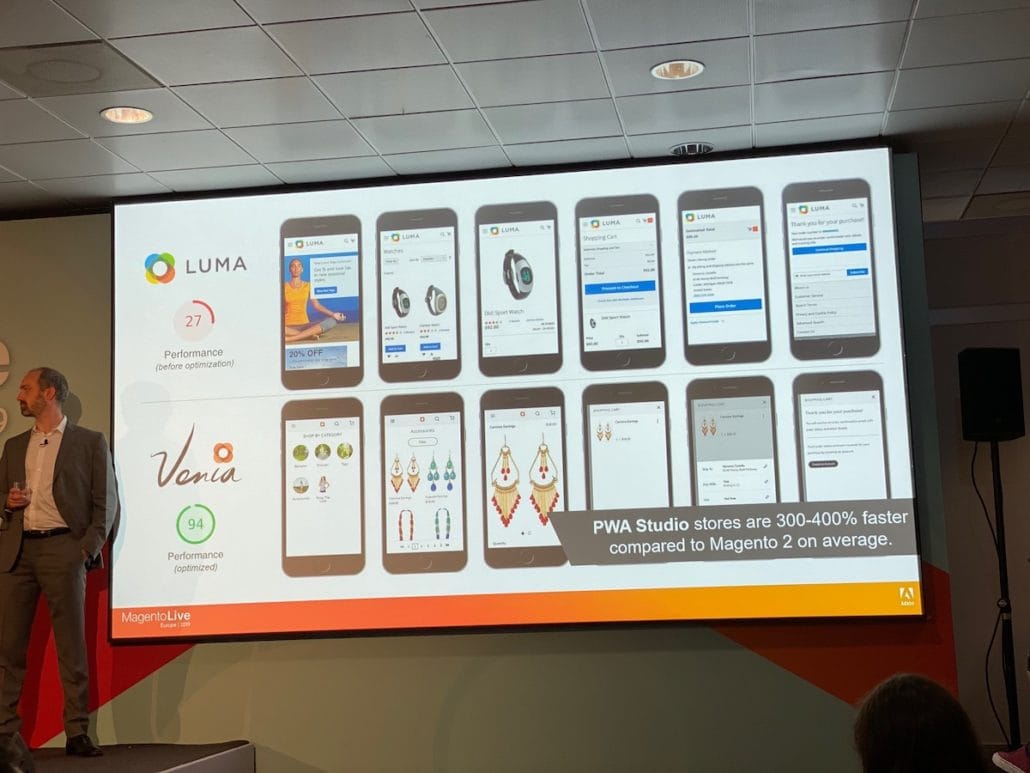
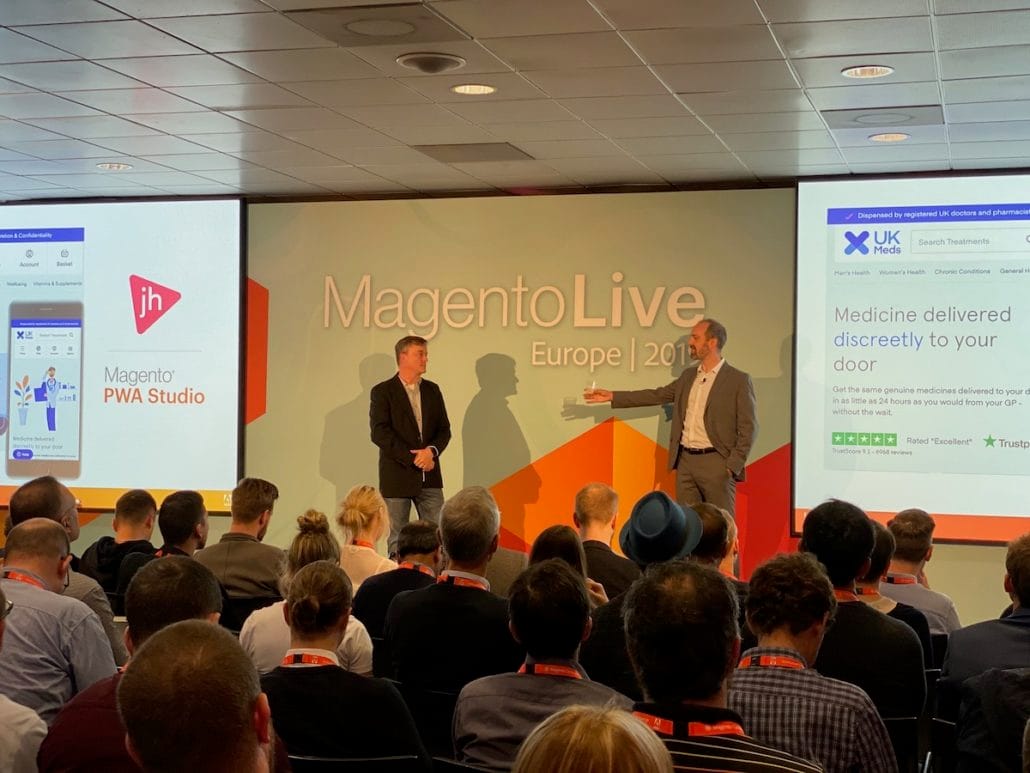
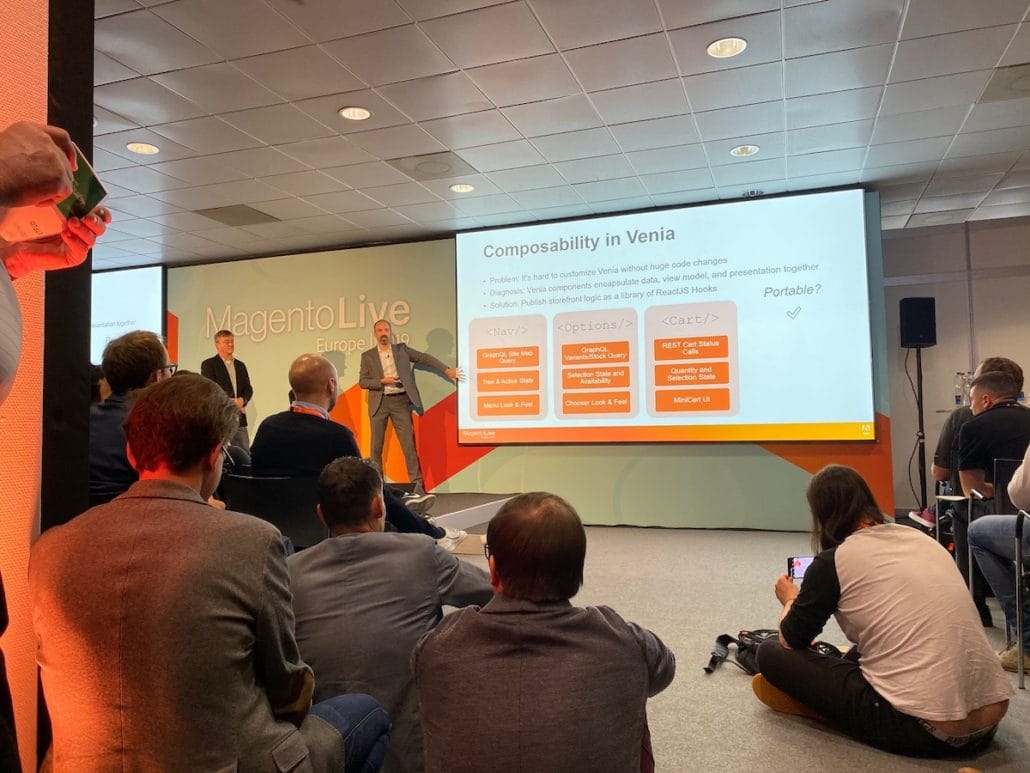
During the opening keynotes Adobe President EMEA (Europe, Middle East and Africa) Paul Robson, Magento Vice President Jason Woosley and other Adobe executives took the stage.
Zadig & Voltaire CTO (Chief Technology Officer) Jonathan Ribas also took the keynote stage to provide insights into their PWA efforts and explain why they’re using Magento 2:
- Magento has a fantastic community
- Open Source platform
- Flexibility
- Localized platform
- Magento 1 end of life is coming
- Magento is changing with Adobe
- Fit their technical and business needs
This is an overview of their new architecture:
- Product Information Management (PIM)
- E-Merchandising: Magento 2
- CMS: headless approach
- Inventory: Multi-Source Inventory (MSI)
- Frontend: PWA
- Checkout: Magento 2
- Order, returns and stocks orchestration: middleware
After lunch I had the opportunity to speak with Jason in person. The audio recording of the interview is available as a podcast including a transcript shortly. I asked him 10 questions about Magento, one of which was what exactly he meant by this quote during his opening keynote:
Vendor Bundled Extensions
On Wednesday morning I attended Megan Harron and Chris Hedges› presentation about improving the total cost of ownership (TCO) for Magento upgrades and extensions. Beginning with Magento 2.3.3 which was released earlier this month, «security-only» updates will be offered. There will be also more vendor bundled extensions pre-installed and tested with each release which will make updates easier:
- Amazon Pay – Login and checkout-out with info already stored in Amazon account (2.2.4+)
- Klarna – Shoppers choose how they want to pay – Installments, Pay Later & Financing (might not be available in Switzerland yet, 2.3.0+)
- Vertex – Automates sales und use tax compliance (focus on US market, 2.2.2+)
- Yotpo – User-generated content marketing pltform enabling merchants to gather, curate, manage, and respond to all kinds of user content (2.3.3+)
- Google Smart Shopping – simplifies Google ad campaign management, maximizes conversion value, and expand reach.
Kudos
Headed back towards Zürich I’m looking back at my second great MagentoLive event in one of my favorite cities in the world. I’d like to thank Adobe for inviting me as a blogger and Adobe communications manager Sylvie Ung for her assistance with interviewing Jason Woosley. As mentioned before, the interview will be available as podcast including transcript very soon.
The event organization was pretty outstanding, the food was very good with a fair amount of vegetarian options. The only thing I didn’t appreciate was the fact that most of the day coffee was only served at the far end of the Sponsors Marketplace, so you had to walk 5-10 minutes in the extensive venue, depending on where you were. Maybe this was on purpose, though, applying supermarket psychology, in order to drive more traffic to the sponsor booths?
Next year, MagentoLive will be part of Adobe EMEA Summit in May 2020 in London and Magento Imagine will be part of Adobe Summit in Las Vegas in March/April 2020.
Other Recaps
- Marcel Ober: Magento Live Europe 2019 Recap
- Chilliapple: Our top 3 talks from MagentoLive Europe 2019
- Jason Woosley: Adobe Announces New Commerce Capabilities for SMBs and Mid-market Merchants
Pictures
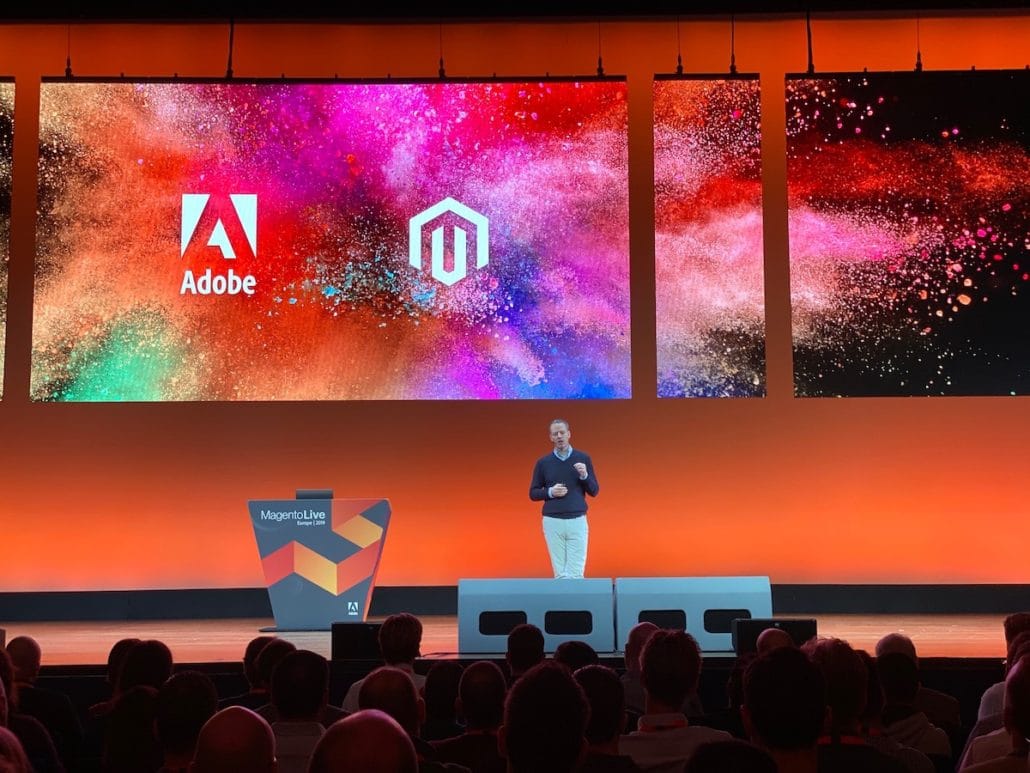
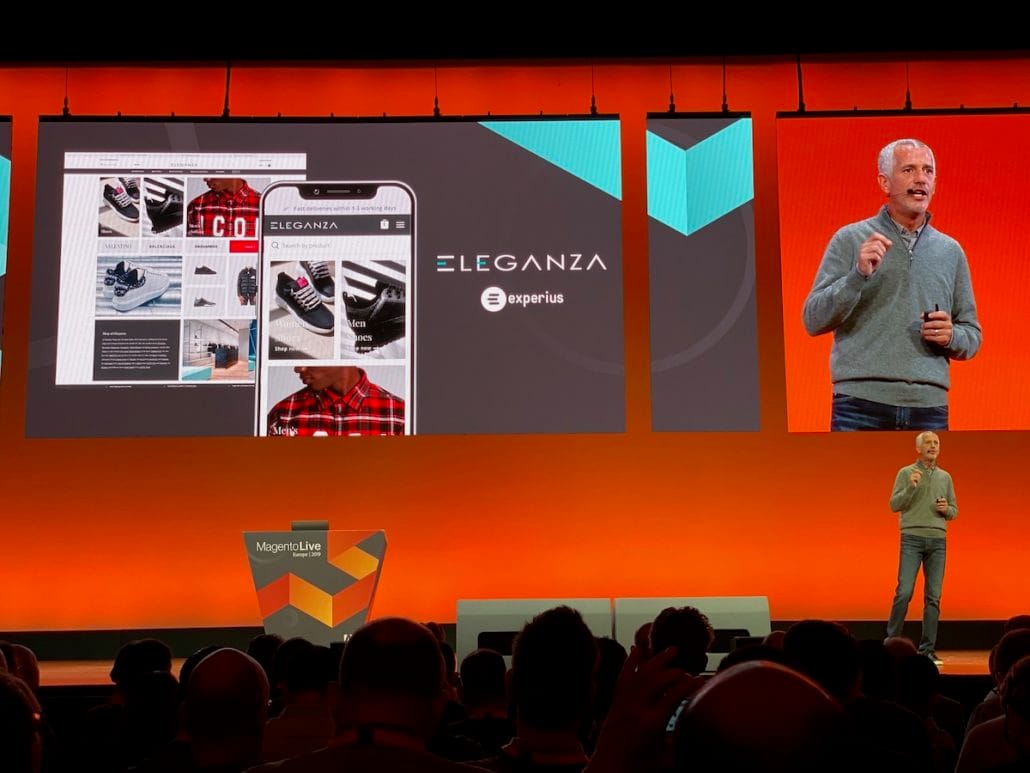
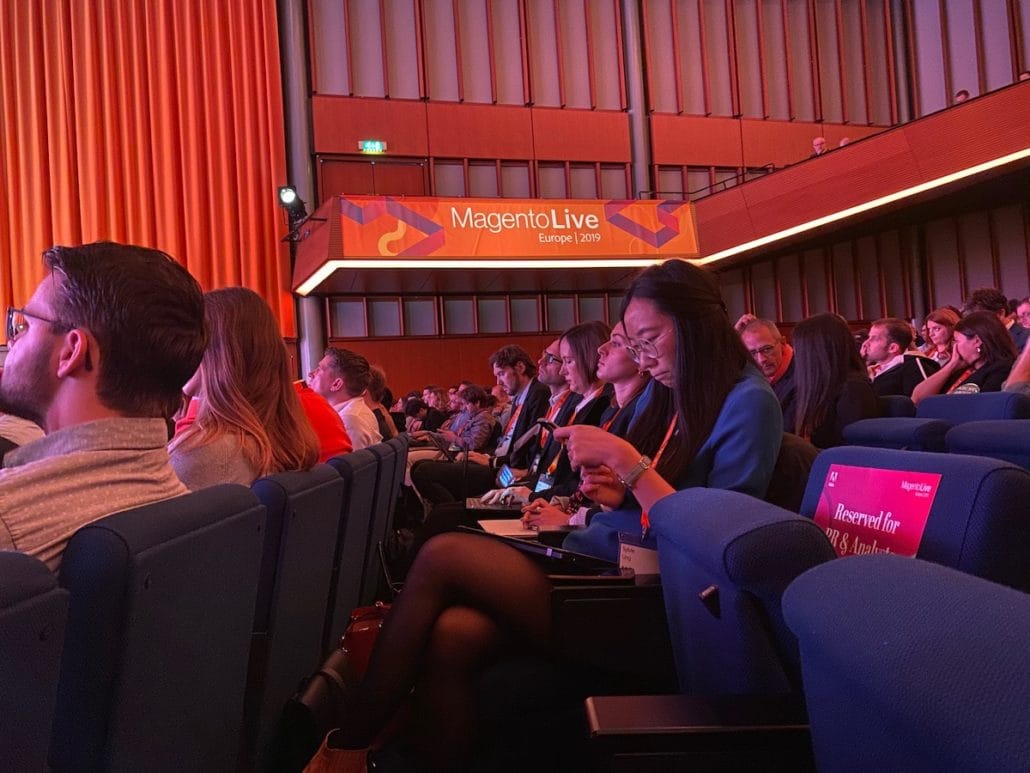

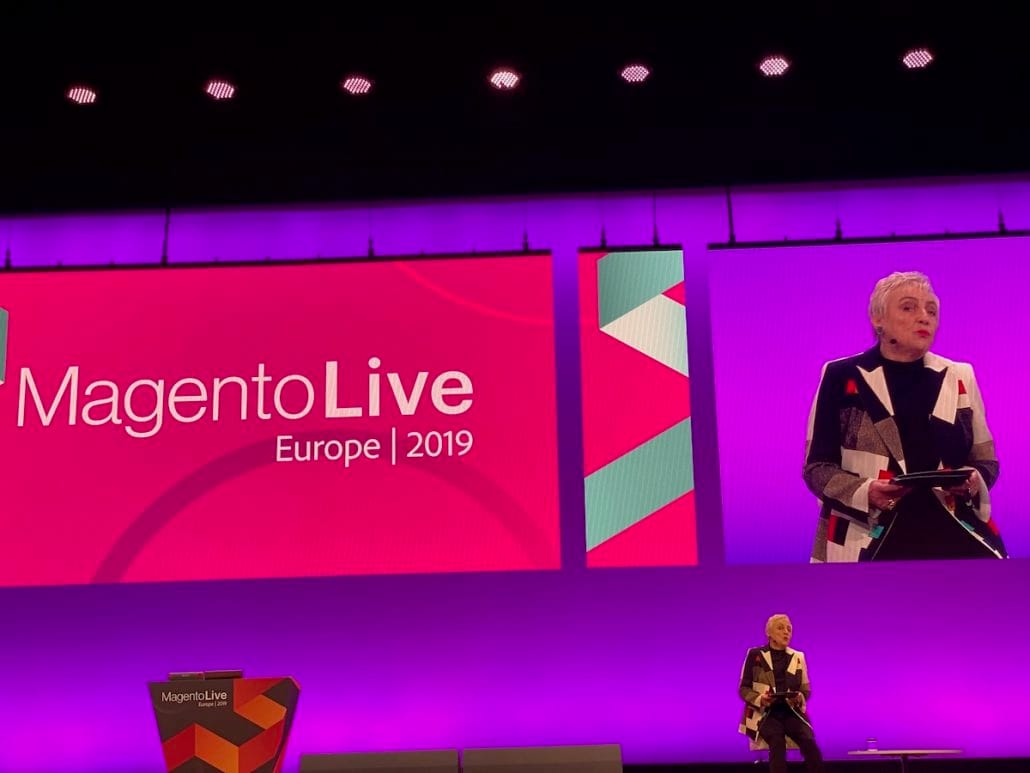
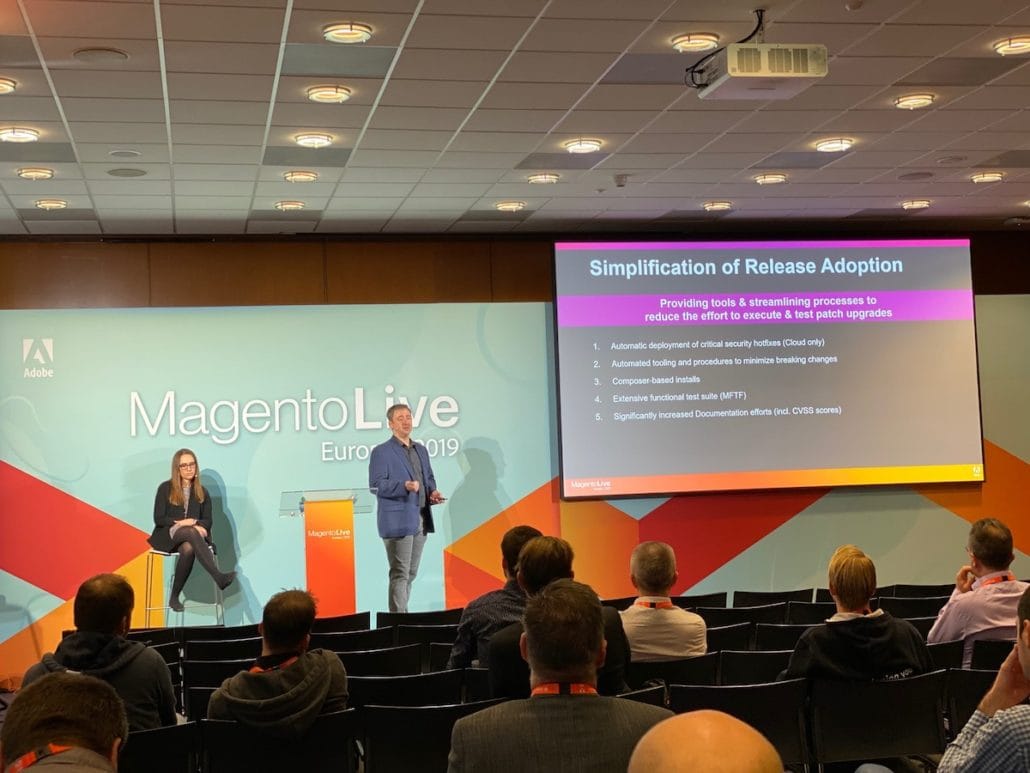
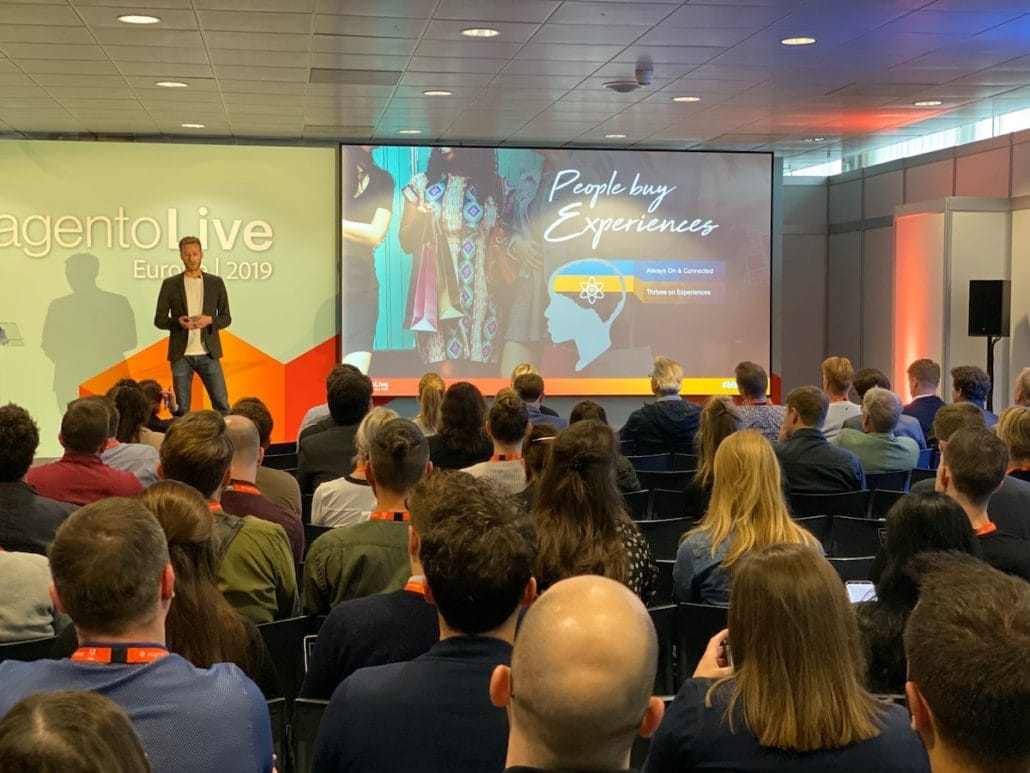
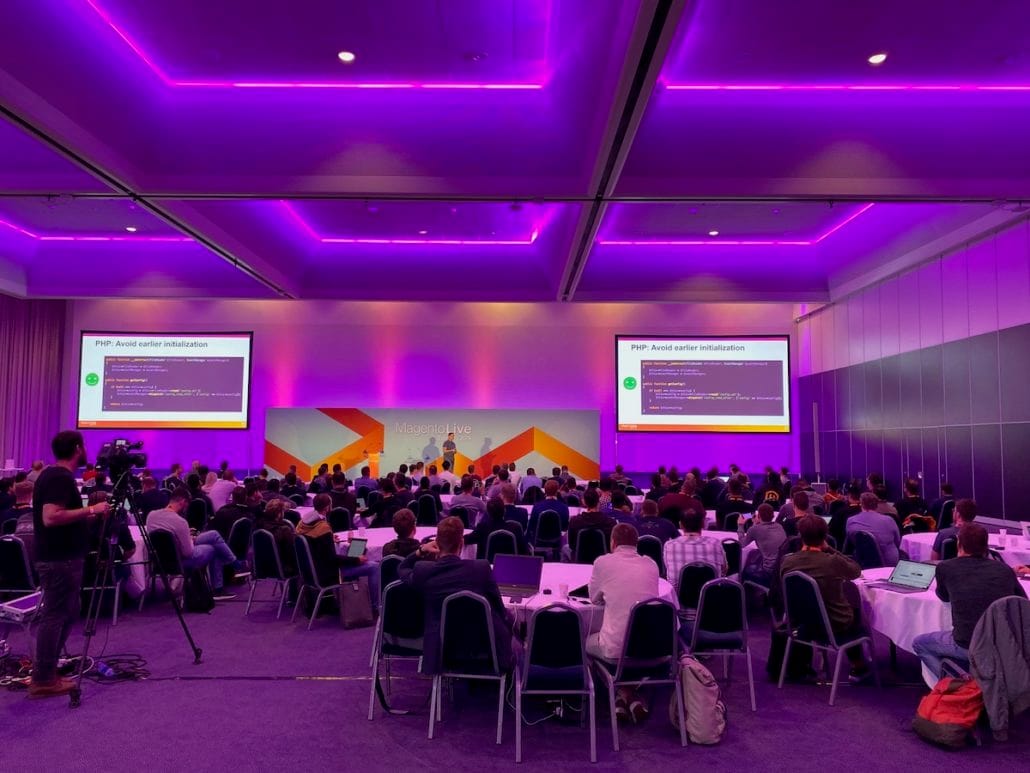
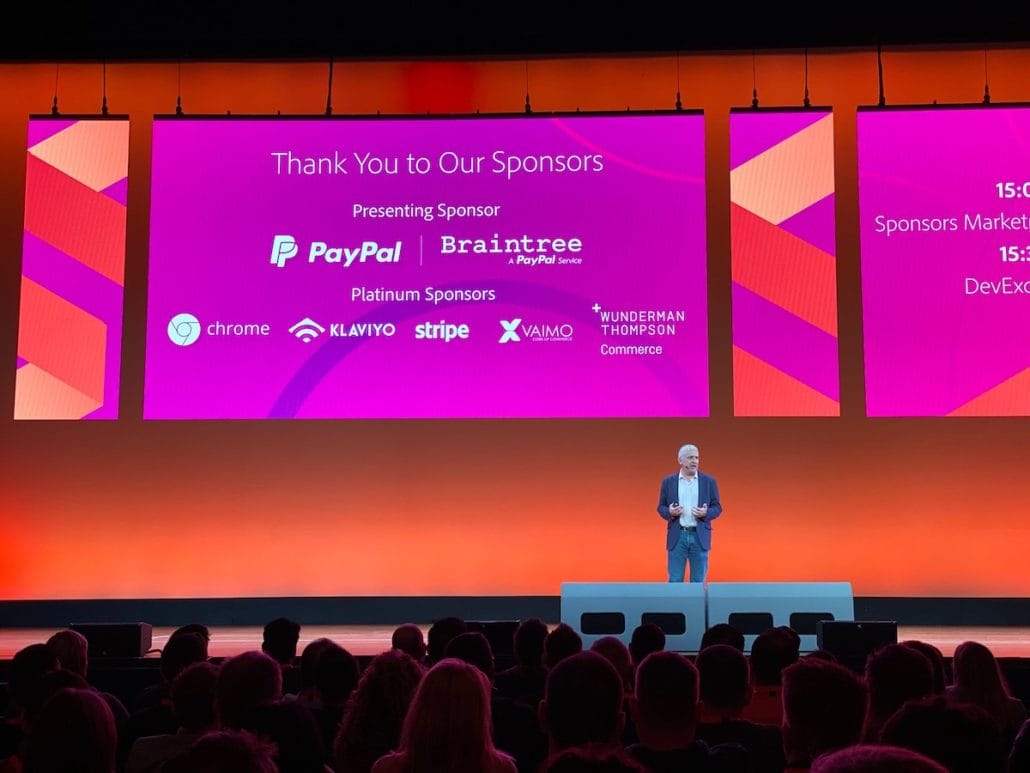


If your recap is missing, please leave a comment.




Schreibe einen Kommentar